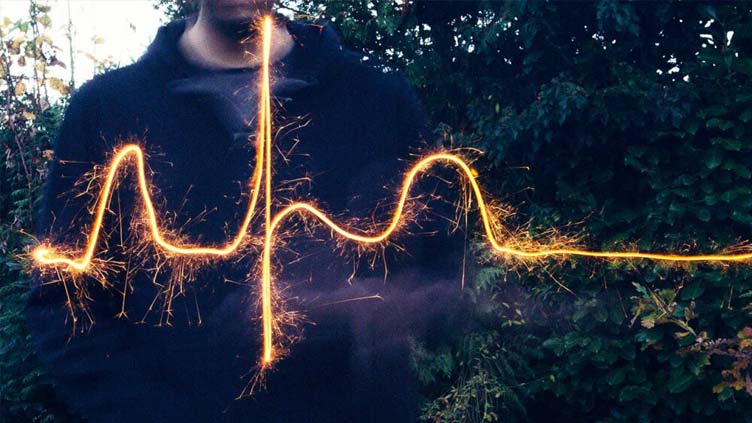Scientists discover a new type of heart cell

Experts categorize these cells according to their primary function in the nervous system.
(Web Desk) - Glial cells are present throughout the nervous system and are critical for normal development and function.
Experts categorize these cells according to their primary function in the nervous system. Subtypes include ensheathing glia, microglia, and astroglia.
The nervous system comprises the central nervous system (CNS), the peripheral nervous system (PNS), and the autonomic nervous system (ANS). The latter two work together to control nonbrain organ systems and functions, including muscle movement, digestion, “fight-or-flight” responses, breathing, circulation, and heart rate.
Now, researchers have discovered a new type of glial cell in the heart that is crucial for both development and function and may explain certain congenital abnormalities and other cardiac diseases.
Researcher Cody Smith, Ph.D., associate professor in the Department of Biological Sciences at the University of Notre Dame, IN, and colleagues reported their findings in PLOS Biology. They also outline its function and location.
Utilizing tissue from zebrafish, mice, and humans, Dr. Smith pinpointed a region of the heart called the outflow tract (OT) that harbored cells in his search for astroglial-like cells.
The novel discovery of these cardiac nexus glia was consistent across species. Interestingly, this region of the OT affects heart health.
Developmentally, neuronal cells in the CNS typically precede those in the PNS and ANS, so Dr. Smith and his team sought the origin of these astroglial cell populations before they make their way into the heart. Using the zebrafish model, he confirmed the source of these glial cells was the neural crest located in the hindbrain.
Within 24 hours of fertilization of the zebrafish embryos, the glial cells began migrating into the heart. By day 4, they had populated the OT. There, a portion of the cells then differentiated into cardiac nexus glia while another portion differentiated into cardiomyocytes and smooth muscles cells.
Dr. Smith’s team later confirmed the presence of these astroglia in both mouse and human cardiac tissue. Contrary to previous research, it was the astroglia that preceded neuronal development — this was difficult to explain given that the axonal branching of neurons only occurs in the absence of glia.
Astroglia and heart function
To test their hypothesis that these cardiac nexus glia regulate heart-related autonomic functions, Dr. Smith and his team removed or ablated the cells across species. On average, the ablated samples had increased heart rates of more than 20 beats per minute. This rhythmic increase in heart rate is known as ventricular tachycardia.
Since ventricular tachycardia occurs due to an imbalance of ionic activity in the OT, the scientists wanted to know whether the absence of cardiac nexus glia in this region was the primary cause.
To do this, they ablated cardiac nexus glia in other regions, notably the atrium — the upper chamber of the heart. There was no effect on heart rate, confirming the importance of cardiac nexus glia in the OT region.
Furthermore, they uncovered significant downstream effects of this cardiac nexus glia disruption on the sympathetic and parasympathetic branches of the ANS. Chemical manipulation of cardiac nexus glia caused a major increase in the duration of ventricular fibrillation — an irregular heartbeat — indicating a reactive role of the sympathetic nervous system in dysrhythmia.
Dr. Smith noted that 30% of congenital heart abnormalities have direct ties to OT dysfunction. However, whether this is specifically due to an aberrance of cardiac nexus glia in the developmental process remains unclear.
Understanding neurons in the cardiovascular system
Despite these new experimental data on astroglial manipulation and cardiac function, how — or if — this translates to heart diseases in humans is still unknown.
Whereas congenital heart abnormalities are readily detectable in utero during pregnancy, later-life cardiovascular problems are multifactorial and involve a complex interplay of genetics and lifestyle.
When asked whether this discovery of astroglia in the heart may underlie a potential link between extreme stress or emotional states and cardiac problems, Dr. Smith noted that this new research was not yet translational.
Nevertheless, this cellular discovery was rather unexpected and may be a harbinger of future discoveries in the field of cardiac neurobiology.
“We started this project because we were fascinated with the unknown of neurobiology but perhaps stumbled on a cell that is relevant to having a healthy heart. The investment in basic science was the spark, though,” Dr. Smith explained.
“As with other glial cells in the nervous system, it seems like we are just at the tip of the iceberg with the role of glia in nervous system function. It is an exciting time to be in the field.”


